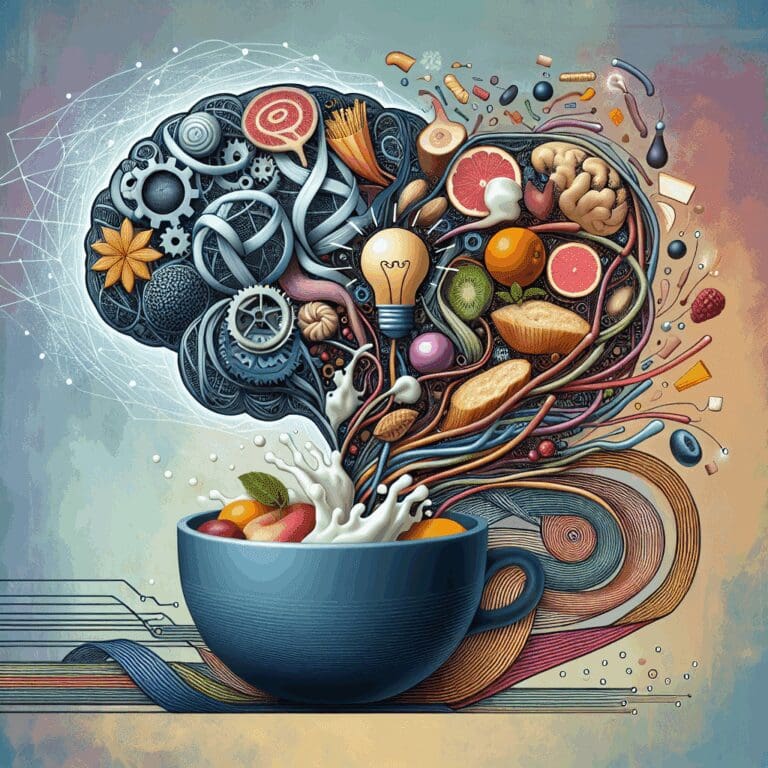Data in this article is provided by PLOS. Related Articles Eye Movements to Natural Images as a Function of Sex and Personality Unraveling the Invisible Ties: How Family and Environment Shape ADHD in Chinese Children Impulsive Action but Not Impulsive Choice Determines Problem Gambling Severity Investigating the Genetic Basis of Theory of Mind (ToM): The […]
Tag: Nutrition

When Sweets Meet Situations: How Context Influences Sweetened Product Consumption in a Middle Eastern Canadian Community
— Introduction: The Sweet Temptation of Everyday Choices Imagine this: you walk into a party, the air is vibrant with chatter, and there, on the table, lies a tempting spread of desserts and sugary drinks. You’re not particularly hungry, yet you find yourself reaching for that enticing piece of cake. Ever wonder why you couldn’t […]

The Nighttime Connection: How Bedtime Habits and Cell Phones Play a Role in Bullying Among Teens
Introduction Picture this: It’s way past midnight, and the glow of a smartphone screen lights up a teenager’s room. They’re texting, scrolling through social media, or playing online games when they should be catching up on rest. Now, consider how this nocturnal lifestyle could be linked to another widespread issue: bullying. A recent research paper […]

Navigating Anxiety: How Childhood Exposure to Chemicals Affects Our Minds and How Diet Can Help
Introduction: Unraveling Anxiety from an Unexpected Source Imagine a chemical commonly found in the everyday items that surround us—plastic water bottles, food containers, or even the linings of canned goods. This substance, known as Bisphenol A (BPA), has quietly woven its way into our lives, becoming a silent partner in the development of our bodies […]

Exploring the Cognitive Compass: Navigating Extreme Eating and Weight Conditions
Introduction Picture this: two individuals, one grappling with anorexia nervosa and the other with obesity. At first glance, their challenges might seem worlds apart. Yet, beneath the surface, their brains could share fascinating similarities that shape their behavior and decision-making. This research paper, ‘Executive Functions Profile in Extreme Eating/Weight Conditions: From Anorexia Nervosa to Obesity’, […]

Exploring the Sweet Connection: How Sensory Sensitivity Shapes Our Eating Habits
Introduction Imagine walking into a bustling bakery, the warm aroma of freshly baked bread wrapping around you like a comforting hug. For many, this sensory experience can be irresistible, luring them to buy more treats than they initially intended. But what if this craving isn’t just about the delicious smell or the sight of golden […]

The Brain’s Dance Between Courage and Caution: Unveiling the CB1 Receptor’s Role in Motivation
Introduction Imagine standing on the edge of a diving board, high above a shimmering pool. You feel the mix of thrill and trepidation, the push and pull of an invisible force that determines whether you leap or retreat. This dynamic dance is a classic representation of what psychologists call approach and avoidance motivation. Why do […]

Understanding the Whirlwind: How Environment Shapes Compulsive Tail Chasing in Dogs
Introduction: A Doggy Dilemma Imagine you’re at the park, basking in the sun while your furry friend romps around in joy. Suddenly, your dog, seemingly out of nowhere, begins chasing its tail in relentless circles. Is it just a playful quirk or something deeper? This behavior, while amusing at times, can be much more than […]

The Dopamine Diet: How Genes Guide Our Hunger and Habits
Introduction: Eating with Our Genes Imagine that your choices at the dinner table are more than just cravings or habits, but also coded within your DNA. Sounds like science fiction, right? Yet, there’s a fascinating reality behind this idea! The research paper titled “Dopamine Genes (DRD2/ANKK1-TaqA1 and DRD4-7R) and Executive Function: Their Interaction with Obesity” […]

Navigating the Nutritional Maze: How Goal Setting Can Tame Excess Gestational Weight Gain
Introduction: The Weighty Matter of Pregnancy Imagine embarking on the transformative journey of pregnancy, a nine-month adventure filled with anticipation and wonderment. It’s a time when every decision seems weighty, quite literally, especially regarding diet and physical activity. For many women, the prospect of gaining too much weight during pregnancy is daunting, as Excess Gestational […]